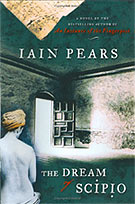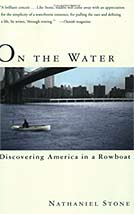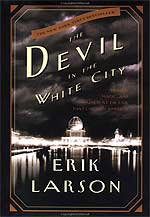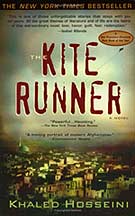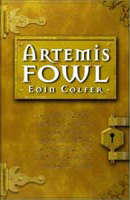Iain Pear’s The Dream of Scipio follows the lives of 3 men, all men who are deeply thoughtful and philosophical, all who must face terrible decisions which try their deepest beliefs, and all men who lived in France’s Provence in three different centuries of great upheaval. Manlius Hippomanus, a wealthy Roman aristocrat, suppresses his own Greek philosophical training to become a Bishop in the mid to late fifth century AD, the period during which the Roman empire is collapsing and Gaul is abandoned to the Visigoths. 900 years later Manlius’ writings are studied by Olivier de Noyen, a poet in the service of Cardinal Ceccani, during the brief historical period in which the pope resided in Avignon – the mid 1300s, and during which time the great plague decimated a third of Europe. 600 years later again, Julien Barveuve, a classics scholar unearths de Noyen’s writings in the Vatican. Like the men before him, Julien’s life is turned upside down as his world collapses during the Nazi invasion of France. Each man is also passionately in love with a powerful woman, and each passion leads to disastrous results.
Reviews
On the Water – Nathaniel Stone
On the Water: Discovering America in a Row Boat – In the spring of 1999, Nat Stone set out in a row boat from near the Brooklyn Bridge in Manhattan to row his way around the Eastern half of the United States – up the Hudson through the Erie Canal, down the Alleggheny and then the Mississippi, around Florida, and back up to Brooklyn and up the coast of Maine. The trip was motivated by a lifelong love of the water and boats, and by the need to fulfill a dream of following the route of Howard Blackburn, a nineteenth-century Gloucester fisherman. (Blackburn had lost his fingers after the froze to his oars while he rowed for 5 days straight to come in from the sea in a storm. Blackburn subsequently taught himself how to sail and rigged a boat that took him up the Hudson, down the Mississippi, and around Florida.) Nat’s trip included one 9 mile stretch of portage, in which, hooked up to a harness, Nat pulled the boat over land. The trip was also broken up into two parts. The first part took Nat all the way down to the point that the Mississippi empties into the sea, begun in April 1999 and completed in August 1999. To complete the ocean journey Nat would need a boat that wouldn’t so easily capsize in ocean swells. He returned to the Bayou in January 2000 and picked up his journey again.
The Devil in the White City – Erik Larson
Erik Larson’s The Devil in the White City is the true story of the building of the magnificent 1893 Columbian Exposition World’s Fair in Chicago and the sociopath murderer H.H. Holmes who preyed on young women coming to see the fair. In his telling, Larson transports us to the late 1800s from when Chicago first wins the right by Congressional vote to host the fair, beating out rival New York City, through the two years it took to build the White City, to the fair itself, which brought in an estimated 40 million visitors during the short time it was open. Daniel H. Burnham, chief architect of the fair, led the extraordinary effort to build the fair, a feat no one thought could be accomplished in the time given. The fair drew the best engineers, architects, and designers the country had and forever transformed the shoreline of Chicago. The result was such a resounding success, Bernham imprinted grandeur into the minds of visitors who came from all over the country and set the course of American neo-classical architecture for the next fifty years.
A few miles away, in the Chicago suburb Englewood, a more sinister story was unfolding. Dr. H.H. Holmes built a boarding house on a full city block, complete with torture chamber and crematorium in its basement. On the first floor of the building Holmes ran a pharmacy, complete with bogus cure-alls, a restaurant, and several seemingly respectable businesses – fronts for countless fraud schemes.
The Kite Runner – Khaled Hosseini
The Kite Runner by Khaled Hosseini, is a story of betrayal, love, and redemption set in modern Afghanistan. Amir, son of a wealthy Afghan businessman, is best friends with Hassan, the son of the household servant. Amir lacks the courage to defend his friend from the brutality of local bullies; this action and the resulting guilt and shame changes the destiny of both families.
The Kite runner spans over three decades of great upheaval in Afghanistan. We in the West knew so little about this country until the events of September 11th propelled the US to invade and oust the fundamentalist Taliban. There was a monarchy, then a democracy, the Soviets invaded, then they were expelled, the Northern Alliance and infighting among Afghan tribes brought destruction to Kabul, the Taliban – punitive, oppressive order. Hundreds of thousands of Afghans fled Afghanistan after the Soviet invasion. Most travelled first to Pakistan. Those who could, including in this novel Amir and his father, came to the U.S, where the immigrant story is so familiar – former generals and surgeons working gas pumps to stay alive. All hope is placed on the younger generation to succeed.
Extremely Loud and Incredibly Close – Jonathan Safran Foer
In Jonathan Safran’s Extremely Loud, Incredibly Close we are introduced to 9 year old Oskar Schell, a highly intelligent, inventive, precocious boy coming to grips with the loss of his father who died when the World Trade Center collapsed on 9-11. Oskar discovers a mysterious key in his father’s closet with the word “Black” written on the envelope that holds the key. He decides to interview every person in NYC’s five boroughs with the last name of Black, and sets off every weekend, on foot to find them. At the same time a parallel story is unfolding with Oskar’s grandparents, their diary entries and letters that help them come to terms with their own fractured lives, having lived through the bombing in Dresden.
Extremely Loud, Incredibly Close is wildly creative. It reminded me at the beginning of The Curious Incident of the Dog in the Night-Time. But Extremely Loud is much richer, and the characters’ lives in more need of repair. There is a parallel too, in the Twin Towers and the destruction of Dresden, two generations apart. This book is sad and wonderful, funny and despairing, and vibrantly alive. Highly recommended.
Artemis Fowl – Eoin Colfer
Artemis Fowl is brilliant, inventive, cunning, devious, and the mastermind of a vast criminal empire. He is only twelve years old. His father lost and presumed dead, his mother suffering from a nervous breakdown, Artemis sets out to restore his family’s fortune by trapping a fairy from the underworld of magical creatures and holding her ransom for fairy gold. Unfortunately for Artemis, he picks the wrong fairy to kidnap – Captain Holly Short of the LEPrecon (Lower Elements Police Reconnaisance) Unit. When Holly’s comrades come to rescue her, things don’t exactly meet up with Artemis’ plans, or theirs.
I had little choice. Knowing how much I love Harry Potter (having read each book at least five times) and scifi/fantasy, my friend Suzanne and her three kids handed me their copies of the Artemis Fowl series and insisted that I read them. Well, it pays to have friends who know you well. These books by author Eoin Colfer are a hoot! Colfer describes his book as “Die Hard with fairies.” Yep, that sums it up pretty well. Sort of like James Bond, Encyclopedia Brown, and Grimms all rolled up in one. Highly entertaining. Artemis Fowl is the first in an ongoing series. In Artemis Fowl: The Arctic Incident Artemis teams up with Holly and the LEP to save his father from the Russian “Mafiya” and fight off a goblin rebellion. In Artemis Fowl: The Eternity Code Artemis gets the whole world into trouble by using secret fairy technology to try to extort money from a evil industrialist.
